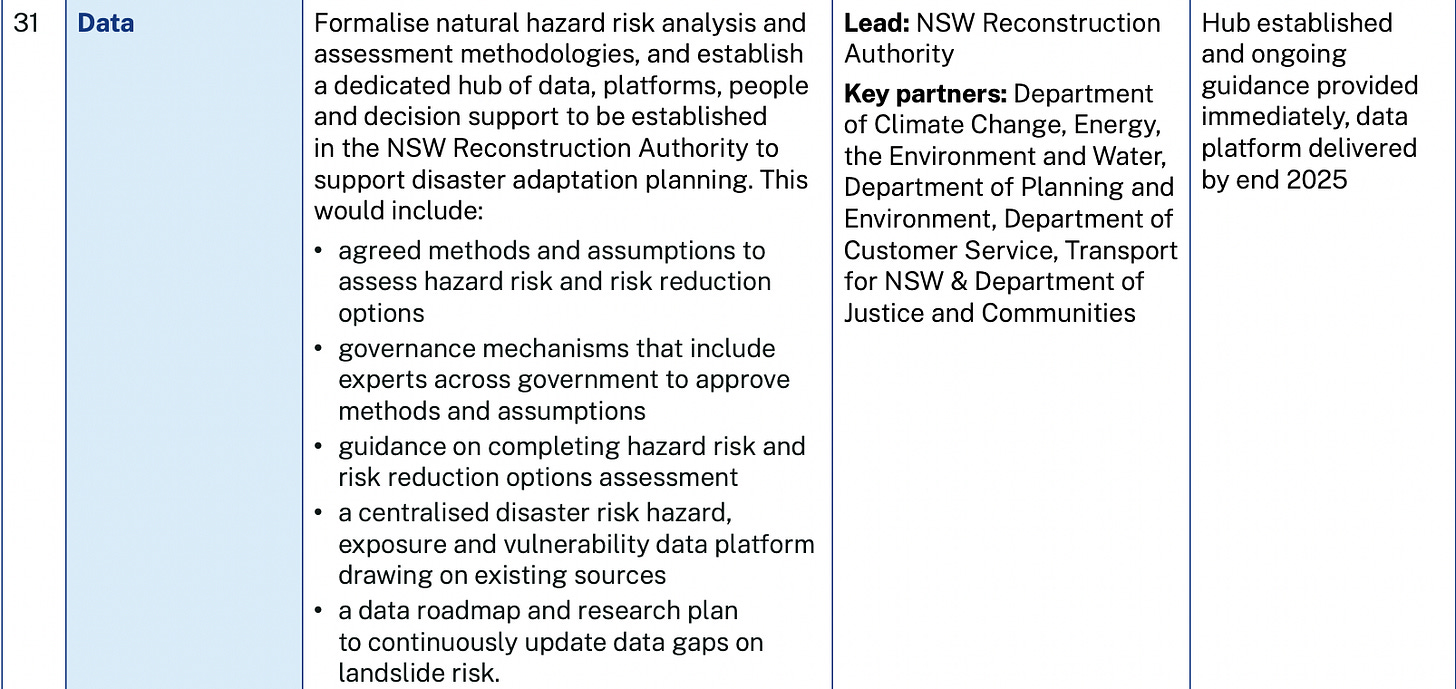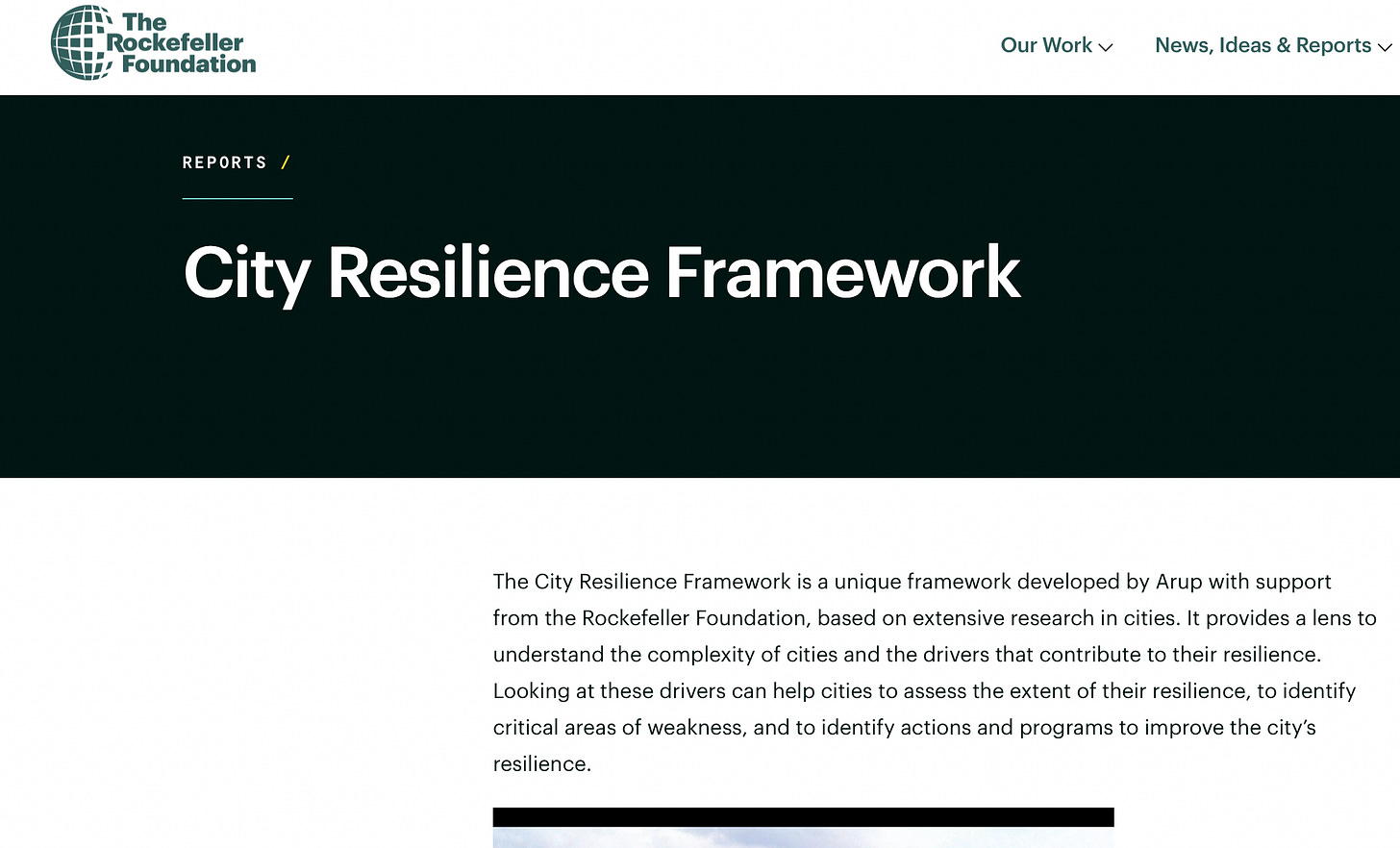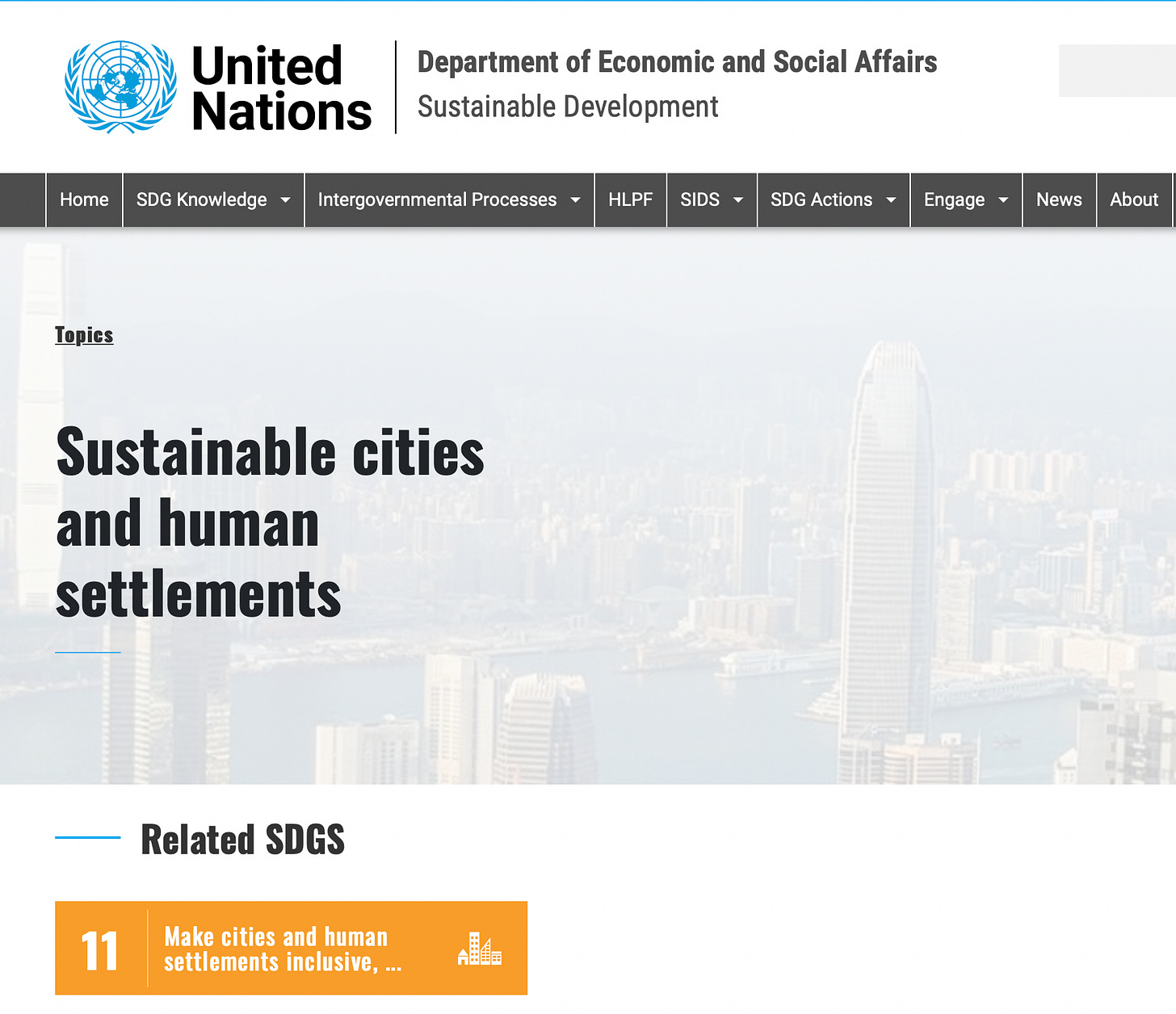Article 1
Managed Retreat is front and centre in the NSW State government Disaster Mitigation Plan, released yesterday. This article will cover: What is being proposed under the NSW State Disaster Mitigation Plan, the Legislation, and will touch on where the public is being shepherded.
This is the first article of a series. In future articles I will unpack the Resilience framework and funders and what is meant by Resilient Housing.
NSW State Disaster Mitigation Plan- released 23rd February 2024
The government is using the Insurance companies definition of an average annual loss (AAL). This is defined as the expected or average cost of damage to property and infrastructure arising from all occurrences or probabilities of that hazard in any one year. This means they take your property, which may be at low risk of fire, flooding, wind damage etc. But those low risks are then compounded and your property will end up in a higher risk category. I discuss this here:
1 in 25 Australian Homes Uninsurable by 2030
Interview with Jason Olbourne from TNT Radio where I discuss the information below: Full Video Here: https://tntradio.live/shows/weekends-with-jason-olbourne/ Thanks for reading Kate Mason! Subscribe for free to receive new posts and support my work.
There is a disclaimer in the State Government Plan (there is always a disclaimer) “the impacts of climate change on all natural hazards are not fully understood, it is expected to increase the frequency, duration, and severity of extreme weather events due to greater climate variability.” They don’t know, but they will push ahead regardless.
The solutions?
“One of the key tools to reduce risk is to change how and where we live through strategic land use planning.” And “Effective risk reduction, particularly changes to strategic land use planning, requires a high degree of collaboration between all stakeholders, and difficult decisions may need to be made.” At least they acknowledge that there will be winners and losers. They tell us “It requires open and collaborative conversations between those who benefit and those affected by different options, including community members, all levels of government, insurance and banking industries, and private businesses.” Winners- Big Business, Insurance and Banking Companies. Losers- Community members.
NSW Reconstruction Authority and Legislation
This plan comes out of the newly formed NSW Reconstruction Authority (formed Dec 2022) which sits under the following Acts:
NSW Reconstruction Authority Act 2022 No 80- An Act to establish the NSW Reconstruction Authority; to provide for the Authority’s functions and powers; to provide for other matters to assist NSW communities to recover from disasters and improve resilience for potential disasters.
The primary object of this Act is to promote community resilience to the impact of disasters in New South Wales through—
(a) disaster prevention, preparedness and adaptation, and
(b) recovery and reconstruction following disasters.
Disaster is defined as:
6 Meaning of “disaster”
In this Act, disaster includes the following—
(a) natural disasters, including, for example, bushfires, coastal hazards, cyclones, earthquakes, floods, heatwaves, landslides, severe thunderstorms, tornadoes and tsunamis,
(b) hazards caused by natural disasters including air pollution, water and soil contamination and water insecurity, other emergencies in relation to which the Minister has requested assistance from the Authority,
The NSW Reconstruction Authority assists in two ways:
Disaster prevention and preparedness.
Recovery and reconstruction
Disaster preventions includes powers such as Managed Retreat- moving people out of areas- towns-houses due to climate change modelling.
Recovery includes working hand in hand with developers to create Resilient Housing.
(k) to carry out research, and provide advice, proposals, recommendations and reports to the Minister, about—
(i) disaster prevention and preparedness, and
(ii) recovery and reconstruction following disasters,
(l) to enter into joint ventures, project delivery agreements and other arrangements with landowners, developers, State and Commonwealth government agencies and local councils in relation to disaster prevention, recovery and reconstruction
The Authority has the right to direct Local Council.
The Authority will work with private corporations:
14 Cooperation with other agencies
In exercising its functions, the Authority may work in cooperation with other government agencies, and other persons and bodies, the Authority thinks appropriate, whether or not the agencies, persons or bodies are in or of the State.
This also involves setting up a NSW Reconstruction Authority Fund
National Reconstruction Fund
Government working with industry to build technology, renewables, medical manufacturing etc. This is the Public Private Partnership model where business works hand in hand with government, to the benefit of the businesses. The people pay for it, thereby leading to an endless transfer of wealth.
Back to the 2022 Act, the Authority can remove your land through compulsory acquisition:
Division 2 Functions of Authority in relation to declared projects, reconstruction areas and disaster prevention areas Particular powers of Authority in relation to declarations
(a) the power to acquire land for the declared project, or relevant land—
(i) by agreement, or
(ii) by compulsory process in accordance with the Land Acquisition (Just Terms Compensation) Act 1991
Once they take the land off the people they can:
(h) carry out work on or in relation to land vested in the Authority, or any other land with the consent of the person in whom the land is vested, or relevant land for the purpose of rendering the land fit for any purpose for which the land may be used under an environmental planning instrument applying to the land.
They can then sell the land:
The Authority may, with the approval of the Minister and subject to the terms and conditions decided by the Minister—
(a) sell, lease, exchange or otherwise deal with or dispose of land vested in the Authority,
https://legislation.nsw.gov.au/view/whole/pdf/inforce/2024-02-14/act-2022-080
The Act was updated in 2023:
https://legislation.nsw.gov.au/view/whole/pdf/inforce/2024-02-23/sl-2023-0032
The CEO of the NSW Reconstruction Authority is Simon Draper:
The Board of the NSW Reconstruction Agency:
Who these people are, their backgrounds and the implications will need to be for another article.
Back to the State Disaster Mitigation Plan
This is the model:
Building codes and standards are being implemented which make private housing more unaffordable, home modifications will be compulsory and again will make housing more unaffordable (as well as land tax, insurance, mortgage repayments, general cost of living increasing) pushing people out of private ownership.
The resilience infrastructure contracts will be awarded to private contractors, and the public will pay for it.
Managed relocation- they can take your land.
Nature based measures- private corporations can invest in ecosystem services and the rewilding of land (including the land that we have been forced off), and they will have a level of ownership.
37 actions outlined in the NSW Mitigation Plan
The Mitigation Plan states: “Following extensive consultation with Australian, State and local government as well as key industry and community stakeholders, 37 actions have been determined to respond to the identified gaps” (I imagine the vast majority of the NSW public know absolutely nothing about this plan). You can see the 37 actions yourself in the Plan attached at start of article. I have pulled out the actions I see as most concerning.
Action 2. “large-scale multi-hazard managed relocation”- this policy will be ready mid 2025.
Regarding Community input, the rationale goes; because it’s so important to have community consultation and we all have a shared responsibility (i.e. we will be paying through the nose, and moved out of our properties) 35 panel members from across NSW were tasked with representing us (who are these special 35 people? Who knows!). These chosen community members were involved in TWO online workshops! This would be laughable if the subject matter wasn’t so disturbing.
We are going to need to get very clear about the Climate Change modelling the State Government is using. It’s very nebulous. Some examples include:
Note they’re using a high risk scenario below.
Here are the Local Government Areas they have identified as being most at risk (The Average Annual Loss (AAL) is the expected or average cost of damage
to property and infrastructure arising from all occurrences or probabilities of
a given natural hazard in any 1 year).
In 2023:
In 2060:
The Central Coast, where I live, is unfortunately topping the list. Coincidentally the Central Coast is in the process of being “TRANSFORMED” in to a Smart Global Mega City. Which means we have recently had Amazon (the winners in the Fourth Industrial Revolution) implant themselves in our area. The Central Coast is the original food bowl for Sydney, and it still has beautiful untouched land and local small scale farmers. A component of becoming a Mega City is that we will also become an Agri-Tech region with Newcastle University (Which has a United Nations arm) opening up more Lab Tech Food facilities and creating partnerships. For Agri-Tech, think Synthetic Food to be created for Smart Cities.
I talk about the Central Coast and Smart Cities here (I now understand more then when I did this talk), but it may still be useful for the basics:
The Central Coast is being developed madly. The Aboriginal Land Council is the largest land holder in the Central Coast (with another 1000 land claims in process). Aboriginal Land Council’s are able to build on environmentally protected land (whereas State government can’t). It’s not hard to see what is going on here.
The Aboriginal Land Council has many partnerships, here is one:
Nature Based Measures (Natural Assets)
Rockefeller is angling to get eco-system services (nature) on the stock market. It's called Natural Asset Companies and they will trade in ecosystem services. I’m foreseeing the following scenario; so it doesn’t look like the land swindle it is, when we are forced out of our homes the government will sell off the “natural assets” to corporations to creates funds to “assist” us with the costs of relocating into “Resilient housing.”
https://www.rockefellerfoundation.org/.../nyse-and.../
Michael Swifte and I talk about NAC’s here and how it links in to the Indigenous Estate:
This video is a good overview of the Natural Asset Market and the transfer of wealth and ownership occurring:
A little context on the Resiliency framework and funders
I will cover this more extensively in another article in the series.
Sydney Morning Herald Feb 23 2023 article- Disaster costs to soar by billions (discussing the NSW Mitigation Plan) quotes Emergency Services Minister Jihad Dib "The focus of the plan is to provide a framework and clear actions for reducing risk where we can, and adapting where we can't, through improved warning systems and a focus on RESILIENT infrastructure."
Committee for Sydney Resilience Program director Sam Kernaghan states "We are especially pleased to see a plan for managed relocation and steps to align insurance data. with planning decisions to avoid future communities being uninsurable against flooding and other disasters."
Committee for Sydney Resilience Program is funded by building corporations, Councils, Consultancy Companies, Amazon- the perfect PPP model. Those who benefit from the strategies implemented fund the think tank who creates the policies.
Here are a few examples:
https://sydney.org.au/membership/allmembers/
The Resilient Cities Framework was established by Rockefeller. Sydney was chosen as one of the 100 Resilient Cities. https://www.bmcc.nsw.gov.au/.../sydney-unveils-first-ever..
The model that best exemplifies how they want us to live (Neom was favourably highlighted by the Smart Cities Council Australia NZ) is Neom in Saudi Arabia.
"THE LINE will eventually accommodate 9 million people and will be built on a footprint of just 34 square kilometers. This will mean a reduced infrastructure footprint, creating never-before-seen efficiencies in city functions. The ideal climate all-year-round will ensure that residents can enjoy the surrounding nature. Residents will also have access to all daily essentials within a five-minute walk, in addition to high-speed rail – with an end-to-end transit of 20 minutes." https://www.neom.com/en-us/regions/theline
They say it's environmental because 95 percent of the surrounding environment is left free of human beings. This is the United Nations Human Settlements model.
https://sdgs.un.org/topics/sustainable-cities-and-human-settlements
I am not implying that the Australian version of Smart Cities will be as ambitious as Neom. However, the Australian version’s will be built on the same principles. Stack and Pack, people removed from nature (to protect it), smart technology collecting data and an AI brain system which will determine our movement, behaviours and actions. Nature has a corporate ownership layer. Food is synthetic- created in Laboratories by the main.
That is for the majority of us, for a very small minority they will be able to access the planet, real food, have houses with land etc. Our government is the middle man setting this model. I will cover this more extensively in future articles.
In the meantime if anyone in NSW is interested in working together to push back against the impending model, please reach out.
































"Disaster preventions includes powers such as Managed Retreat- moving people out of areas- towns-houses due to climate change modelling." Given how reliable their COVID modelling proved to be, their climate change modelling MUST be bonza!
When I was 12 years old the State Planning Authority "resumed" an area containing about 70 homes, including the double brick home my Dad had built himself. My parents had come to Australia with nothing after WWII to start a new life, and had been sold the block of land only a decade earlier. My father never really recovered from that betrayal. That was my first plunge into activism and gave me a deep distrust of government authoritarianism. At my age now, I'd say "over my dead body" will I be shifted on the basis of some armchair modelling by a bunch of handpicked "scientists" in the IPCC. What a rort!
Thanks Kate. It’s interesting that their definition of natural disasters, which forms the basis for actions such as managed relocation, includes ‘heatwaves’. We’ve seen through the BOM and the media this summer that they are in the process of reeducating us as to what constitutes a ‘heatwave’ with now anything over 30 that lasts more than a couple of days seeming to fit that category.